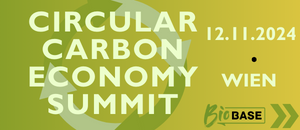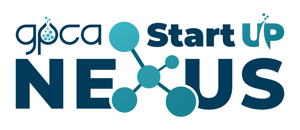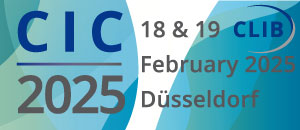The world’s largest conference on “CO2 as Feedstock for Chemistry and Polymers” (Haus der Technik Essen, 10-11 October 2012) covers an incredibly wide range of uses for CO2, developing a vision for a sustainable carbon dioxide economy.
Carbon dioxide (CO2) emissions, the end product of burning fossil fuels or biomass, are largely responsible for the greenhouse effect and thus for climate change. A reduction in CO2 emissions is therefore at the very top of the international political agenda. Trials are running in parallel to explore underground sequestration of CO2 from power stations, thereby removing it from the atmosphere.
It would at first sight seem paradoxical to wish to use energy-poor, inert CO2 molecules. Considerable research and development efforts in recent years have led to new and innovative CO2-recycling technologies and a vision of a CO2 economy. CO2 recycling has quickly become a hot topic for the future for every large company in the chemicals and plastics sector. Wirtschaftswoche reports that even Novel prizewinners George Olah and Joseph Stiglitz have recognized the gas as a future fuel and raw material of the chemical industry.
In the last three years, the US Department of Energy and the German Ministry for Research (BMBF) have each provided some €100 million for research into new uses for CO2. These investments are already bearing fruit. Evonik, BASF and Bayer Material Science are working hard on CO2 polymers. Siemens and BASF demonstrated the first applications in household appliances such as fridge compartments and vacuum cleaner casings at the ACHEMA fair in Frankfurt in June 2012. The automobile and aircraft industries are working on fuels that depend on neither from oil nor biomass, but are instead derived from solar and wind power – and CO2. These are also early days for a new chemical sector: recycling – the cascade use of CO2 as a raw material for the chemical industry. Now new chemical and electrochemical reactions must be discovered and further technologies developed (e.g. the efficient separation and purification of CO2 from the emission flow) to turn the climate killer into a renewable resource.
Alessandra Quadrelli from Lyons University sees CO2 as one of the most important raw materials for the chemical industry in the future. According to her calculations, innovative chemical uses of CO2 could achieve up to 10% of the global reduction in greenhouse gases that is required.
CO2 polymers – new options for the plastic industry
The main new CO2 polymer is polypropylene carbonate (PPC), which was first developed 40 years ago by Inoue, but is only now coming into its own. PPC is 43% CO2 by mass, biodegradable, shows high temperature stability, high elasticity and transparency, and a memory effect. These characteristics open up a wide range of applications for PPC, including countless uses as packing film and foams, dispersions and softeners for brittle plastics. The North American companies Novomer and Empower Materials, the Norwegian firm Norner and SK Innovation from South Korea are some of those working to develop and produce PPC.
Bayer Material Science exhibited polyurethane blocks at ACHEMA, which were made from CO2 polyols. CO2 replaces some of the mineral oil use. Industrial manufacturing of foams for mattresses and insulating materials for fridges and buildings is due to start in 2015.
PPC as a softener for bioplastics
Many bio-based plastics, e.g. PLA and PHA, are originally too brittle and can therefore only be used in conjunction with additives for many uses. Now a new option is available. They can cover an extended range of material characteristics through combinations of PPC with PLA or PHA. This keeps the material biodegradable and translucent, and it can be processed without any trouble using normal machinery. The vacuum cleaner casings that Bosch Siemens Household Appliances (BSH) displayed at ACHEMA are predominantly made of BASF’s PPC and PHA and are intended as a substitute for the bulk plastic ABS. The first internal life-cycle analysis studies demonstrate the material’s clear advantages. PPC/PLA combinations were used in fridge compartments.
Fuel from wind power, solar power and CO2
An outside energy source is required if CO2 is to be used as fuel. The major option here is to use surplus wind and solar power, which frequently occurs in Germany. Storage is a central concern with the expansion of renewable energy.
If the surplus electricity is used to produce hydrogen (H2) from water, this can then be converted into various fuels in conjunction with CO2. The first reaction is that of H2 with CO2 to form methane (CH4), which can then fed into the gas network. Further chemical processes lead to methanol, petrol, diesel and kerosene. The high temperature steam electrolysis that is being optimized in the BMBF project now achieves a 70% efficiency level (electricity to hydrogen).
In 2011 a consortium of businesses in Iceland began building the first commercial plant, which will produce 5 million litres of methanol per year from CO2. That would cover 2.5% of Iceland’s fuel needs.
CO2 as growth substrate for algae and bacteria
However, the world’s largest use of CO2 takes every day right in front of our eyes. With the help of photosynthesis (and with the action of sunlight), plants convert carbon dioxide into sugar, which they then use to produce all the important bio-molecules. This can also be commercially exploited: in large-scale reactors algae are gassed with carbon dioxide from power stations and then produce biomass.
Some bacteria can also use CO2. The metabolism of these so-called acetogenic bacteria enables them to use CO2 along with a carbon monoxide/hydrogen mixture (synthesis gas) as a growth substrate and as a basis for producing various products such as acetone, butanol and ethanol. A joint project between RWE and biotech company Brain was able to isolate numerous strains of bacteria in power station chimneys that could serve this purpose.
Changes through molecular engineering to the bacteria can also lead to products other than the normal end products – for example the acrylic acids needed to produce PMMA (a polymer better known as plexiglass) and the biopolymer PHB. Synthetic biology methods should even allow for the production of customized bacteria in future for optimal CO2 efficiency. Evonik in particular is working on the production of various chemicals, while the New Zealand firm LanzaTech is developing aircraft fuel and specialty chemicals based on butanol derived from CO2 fermentation.
The world’s largest conference on CO2 as feedstock to be held in Germany
On 10 and 11 October 2012 nova-Institute will be organizing an English-language “Conference on Carbon Dioxide as Feedstock for Chemistry and Polymers” at the Haus der Technik in Essen with an accompanying exhibition. There will be comprehensive presentations and discussion of every facet of the new uses of CO2 . Leading international scientists and companies from Germany (BASF, Bayer, Dechema, Evonik, Linde, Brain), New Zealand (LanzaTech), the Netherlands (DSM, ECN), Norway (Norner), South Korea (SK Innovation) and the USA (Empower Materials, Novomer) have already confirmed that they will speak at the conference. Over 400 participants are expected.
All the information about the largest world conference on “Carbon Dioxide as Feedstock for Chemistry and Polymers” (Haus der Technik, Essen, 10-11 October 2012) is available at http://www.CO2-chemistry.eu
Conference partners: Haus der Technik (House of Technology) Essen, Cluster Industrial Biotechnology (CLIB2021), European Chemical Industry Council (CEFIC), Enterprise Europe Network, Kunststoffland NRW, vito – vision of technology (Belgien), Knowledge and Information Network Polymer Technology (wip) und Stiftung Arbeit und Umwelt (foundation work and environment).
The conference will be held under the patronage of the Ministry of Innovation, Science, Research and Technology of the State of North Rhine-Westphalia.
Click here for press release as PDF file.
Responsible under the terms of the German press law:
Dipl.-Phys. Michael Carus (Managing Director)
nova-Institute for Ecology and Innovation, Chemiepark Knapsack
Industriestraße 300, 50354 Hürth (Germany), www.nova-institute.eu
Tel.: +49 (0) 2233-48 14 40
Contacts:
Dominik Vogt: dominik.vogt@nova-institut.de
Achim Raschka: achim.raschka@nova-institut.de
Source
nova-Institut GmbH , press release, 2012-07-04.
Supplier
BASF SE
Bayer AG
Bayer MaterialScience AG
BRAIN AG - Biotechnology Research And Information Network AG
Bundesministerium für Bildung und Forschung (BMBF)
Cluster Industrielle Biotechnologie e.V. (CLIB2021)
DECHEMA Gesellschaft für Chemische Technik und Biotechnologie e.V.
DSM
Empower Materials
Energy research Centre of the Netherlands (ECN)
Enterprise Europe Network
European Chemical Industry Council (CEFIC)
Evonik Industries AG
Flemish Institute for Technological Research (VITO)
Haus der Technik Essen
kunststoffland NRW e.V.
LanzaTech Ltd.
Linde Group
Ministerium für Innovation, Wissenschaft und Forschung des Landes NRW
Ministerium für Innovation, Wissenschaft, Forschung und Technologie des Landes Nordrhein-Westfalen (MIWFT)
Norner Research AS
nova-Institut GmbH
Novomer
RWE AG
Siemens AG
SK Innovation
Stiftung Arbeit und Umwelt
University of Lyon, France
US Department of Energy (DoE)
Wissens- und Informations-Netzwerk Polymertechnik (wip)
Share
Renewable Carbon News – Daily Newsletter
Subscribe to our daily email newsletter – the world's leading newsletter on renewable materials and chemicals

















